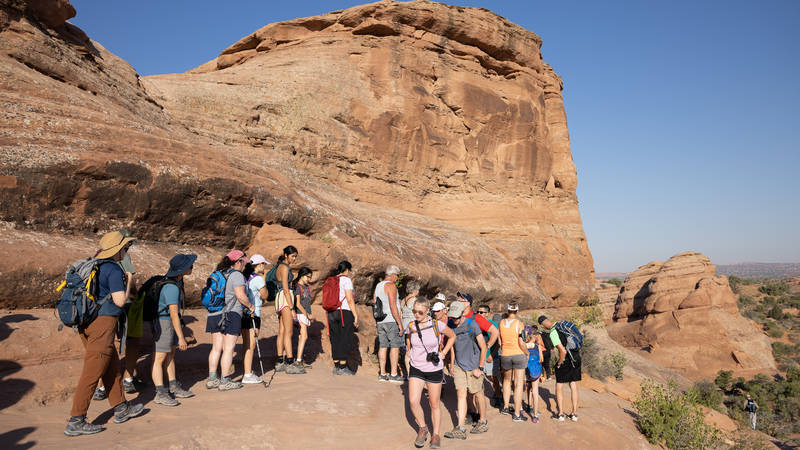Research Results and Mitigation Strategies
Downloads
to Improve Wildlife Connectivity and Human Safety along I-40 in the Pigeon River Gorge
Tens of millions of birds, reptiles, amphibians, and mammals are killed per year on roads in the United States. In addition to causing direct mortality, roads can hinder the movement behavior of large-bodied mammals—such as dispersal and migration—that are typically associated with key ecological processes. Additionally, vehicle collisions with these large mammals pose significant threats to driver safety.
A solution for mitigating the negative effects of roads on wildlife and human safety is creating wildlife road infrastructure that provides safe passage for wildlife across roads by excluding wildlife from the roadway. Road ecology research is necessary to identify the patterns and processes of wildlife-road interactions and to guide the placement of wildlife structures along a given stretch of highway.
Given the ecological diversity, importance of wildlife connectivity, and the severity of elk-, deer-, and bear-vehicle collisions in the mountainous region surrounding Great Smoky Mountains National Park, our research focused on a 28-mile stretch of Interstate 40 that winds through the steep and rocky Pigeon River Gorge, where the busy interstate impedes wildlife movement and access to adjacent National Forest lands. We conducted multifaceted research and subsequent analysis to provide a framework that identifies areas along the interstate where mitigation strategies such as road crossing structures could be best implemented to reduce wildlife-vehicle collisions and increase wildlife habitat connectivity.
Based on our research findings, we provide 20 detailed mitigation recommendations for improvements to existing structures or the creation of new structures throughout the Gorge and we call for the installation of a system of strategically-placed wildlife fencing.
For Media Inquiries
-
General
-
- NPCA Region:
- Southeast
-
Issues


